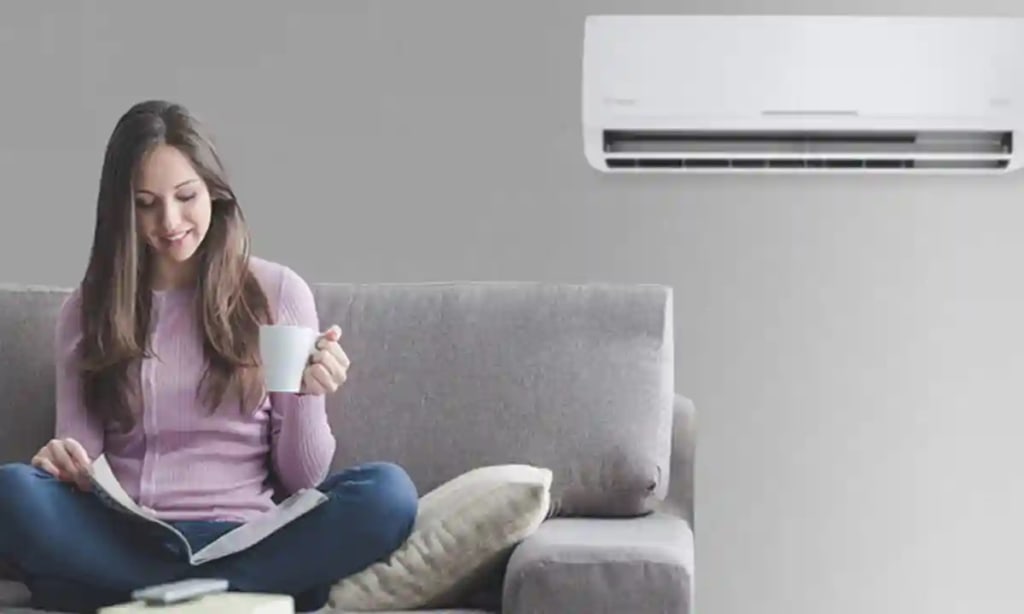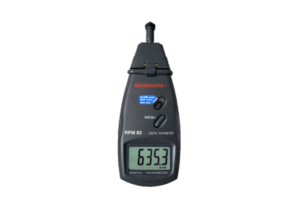
As summer temperatures continue to rise, having access to air conditioning becomes increasingly important. For those who are disabled or low-income, this can be a financial burden. Fortunately, there are government programs and nonprofit organisations that provide assistance to those in need. In this article, we will explore how to get a free air conditioner from the government if you’re disabled or low income.
Air conditioning is not just a luxury, it is a necessity. It is essential for maintaining a comfortable and safe living environment, especially for those who are disabled or low-income. Without proper air conditioning, these individuals are at risk of serious health problems and discomfort during extreme heat waves.
Understanding the Program
One of the government programs that can help those who are disabled or low-income is the Low-Income Home Energy Assistance Program (LIHEAP). LIHEAP is a federally funded program that provides assistance with energy bills, including the cost of air conditioning.
Eligibility Requirements for LIHEAP
To be eligible for LIHEAP, individuals must meet certain income requirements. These requirements vary depending on the state in which you live. Typically, households must have an income at or below 150% of the federal poverty level. Additionally, you must be responsible for paying home energy costs and have a household member who is a U.S. citizen or legal resident.
Overview of How the Program Works
LIHEAP provides financial assistance to eligible households in the form of a grant. This grant can be used to cover energy bills, including the cost of air conditioning. The amount of the grant varies depending on the household’s income, family size, and energy costs.
Applying for LIHEAP
Applying for LIHEAP is a relatively simple process.
Step-by-Step Guide on How to Apply for LIHEAP
- Contact your local LIHEAP office or community action agency.
- Schedule an appointment to apply for LIHEAP.
- Gather the necessary documents, such as proof of income and residency.
- Attend your appointment and fill out the LIHEAP application.
- Submit your application and wait for approval.
Common Mistakes to Avoid When Applying for LIHEAP
When applying for LIHEAP, it is important to avoid common mistakes that can delay or prevent approval. Some of these mistakes include providing incomplete or inaccurate information, failing to provide all necessary documentation, and missing application deadlines.
Tips for Ensuring a Successful Application
To ensure a successful application, it is important to be organized and thorough. Keep track of all necessary documents and deadlines, and be sure to provide accurate and complete information. If you have any questions or concerns, don’t hesitate to contact your local LIHEAP office for assistance.
Other Government Assistance Programs
In addition to LIHEAP, there are other government programs that may provide assistance with air conditioning costs.
Eligibility Requirements for Each Program
The eligibility requirements for each program vary depending on the program and the state in which you live. Some programs that may provide assistance include the Weatherization Assistance Program (WAP), the Community Services Block Grant (CSBG), and the Home Energy Assistance Program (HEAP).
How to Apply for Each Program
To apply for these programs, you will need to contact your local program office or community action agency. They will be able to provide you with information on eligibility requirements and application procedures.
Alternative Ways to Get a Free Air Conditioner
There are also non profit organisations that provide free air conditioners to those in need.
Eligibility Requirements for Each Organization
Each organisation has its own eligibility requirements, but generally, they provide assistance to low-income households, seniors,
Alternative Ways to Get a Free Air Conditioner
While government programs may be the most well-known option for obtaining a free air conditioner, there are several nonprofit organisations that can also help. These organisations provide assistance to individuals who do not meet the eligibility requirements of government programs or who need additional support. Some of the organisations that offer free air conditioners include:
- The Salvation Army
- The American Red Cross
- The United Way
- Cool Share Program
- Operation Cool
Each organisation has its own eligibility requirements, so it’s important to research each one thoroughly before applying.
Overview of Nonprofit Organizations that Provide Free Air Conditioners to Those in Need
One of the most popular non profit organisations that provides free air conditioners is the Low-Income Home Energy Assistance Program (LIHEAP). LIHEAP is a federally funded program that provides assistance to low-income households to help pay their energy bills, including the cost of an air conditioner. To be eligible for LIHEAP, applicants must have a household income that falls below a certain threshold and meet other requirements, such as residency and citizenship.
Other nonprofit organisations that provide free air conditioners include The Salvation Army, which offers assistance to individuals in need during times of extreme heat, and The American Red Cross, which provides emergency cooling centres during heatwaves. It’s important to note that the availability of free air conditioners through nonprofit organisations may vary by location.
Eligibility Requirements for Each Organization
As mentioned previously, each organisation that provides free air conditioners has its own eligibility requirements. For example, LIHEAP has income guidelines that vary by state, so it’s important to check with your local LIHEAP office for specific eligibility requirements.
The Salvation Army’s Heat Relief Program provides assistance to low-income households, individuals with disabilities, and the elderly during times of extreme heat. To be eligible for the program, individuals must meet income requirements and live in one of the eligible zip codes.
The American Red Cross provides emergency cooling centres during heatwaves. These centres are open to the public and provide a safe, air-conditioned space for individuals to cool off. There are no specific eligibility requirements to access the cooling centres.
How to Apply for Assistance
To apply for assistance through LIHEAP, individuals must contact their local LIHEAP office. The office will provide information on eligibility requirements, required documentation, and how to apply for assistance.
To apply for assistance through The Salvation Army or The American Red Cross, individuals should contact their local office or visit the organisation’s website for more information.
Choosing the Right Air Conditioner
When choosing an air conditioner, there are several factors to consider, such as the size of the room, the energy efficiency of the unit, and the type of air conditioner. The most common types of air conditioners include:
- Window air conditioners
- Portable air conditioners
- Central air conditioners
After determining your eligibility and finding out which assistance program or organization you can apply to, the next step is to choose the right air conditioner that suits your needs. There are several types of air conditioners available, and each has its own set of features and benefits.
- Window Air Conditioners: These are the most commonly used air conditioners in residential settings. They are easy to install and can cool a single room or small area. They come in different sizes, and you should choose one that fits your window opening. Window air conditioners are affordable, but they can be noisy and less energy-efficient than other types.
- Portable Air Conditioners: These are similar to window air conditioners, but they can be moved from room to room. They are easy to install and do not require a permanent installation. Portable air conditioners come in different sizes and styles, and they are more expensive than window units.
- Split Air Conditioners: These are more expensive than window and portable air conditioners, but they are more energy-efficient and can cool larger areas. Split air conditioners consist of two parts, an indoor unit and an outdoor unit, and they require professional installation.
- Ductless Mini-Split Air Conditioners: These are similar to split air conditioners but do not require ductwork. They are ideal for homes without central air conditioning and can cool multiple rooms. Ductless mini-split air conditioners are more expensive than other types of air conditioners, but they are energy-efficient and easy to install.
When choosing the right air conditioner for your needs, consider the size of your room or area, your budget, and your energy efficiency goals. Look for models with a high Energy Star rating, as they are more energy-efficient and can help you save on your energy bills.
Getting the Most Out of Your Air Conditioner
Once you have chosen the right air conditioner, it is important to use it efficiently to save on your energy bills. Here are some tips to help you get the most out of your air conditioner:
- Set the temperature to a comfortable level: Setting your air conditioner to a lower temperature does not cool your home faster, and it can waste energy. Set your thermostat to a comfortable level, typically between 72-78 degrees Fahrenheit.
- Use a programmable thermostat: A programmable thermostat can help you save energy and money by automatically adjusting your home’s temperature based on your schedule.
- Close doors and windows: Keep your doors and windows closed while your air conditioner is running to prevent warm air from entering your home.
- Use ceiling fans: Ceiling fans can help circulate the cool air throughout your home, making it feel cooler.
- Keep your air conditioner clean: Clean or replace your air filter regularly to keep your air conditioner running efficiently.
Maintaining Your Air Conditioner for Optimal Performance
Regular maintenance is essential to keep your air conditioner running smoothly and efficiently. Here are some maintenance tips to keep in mind:
- Clean or replace your air filter: A dirty air filter can reduce your air conditioner’s efficiency and cause it to work harder than it needs to.
- Check your air ducts: Leaky air ducts can waste energy and reduce your air conditioner’s efficiency. Have your air ducts inspected and sealed if necessary.
- Keep the outdoor unit clean: Remove any debris or leaves from the outdoor unit to ensure proper airflow.
- Schedule annual maintenance: Have a professional HVAC technician inspect and maintain your air conditioner annually to keep it running efficiently and to prevent costly repairs.
Conclusion
Air conditioning is essential for those who have disabilities or low income and need assistance to stay cool during the hot summer months. there are several ways for low-income individuals or those with disabilities to obtain a free air conditioner. One of the most common and effective methods is through the LIHEAP program, which provides financial assistance to eligible households. Other organisations and charities also offer assistance in the form of free air conditioners, and it’s important to research and understand the eligibility requirements and application processes for each one.
Choosing the right air conditioner is also crucial for optimal comfort and efficiency. By understanding the different types of air conditioners and their features, and by considering energy-efficient models, individuals can save money on their energy bills while still enjoying cool air. Proper usage and maintenance of the air conditioner can also increase its lifespan and performance.
If you or someone you know is in need of a free air conditioner, do not hesitate to explore the options available and apply for assistance if eligible. With the right knowledge and resources, everyone can beat the heat and stay cool and comfortable all summer long.

